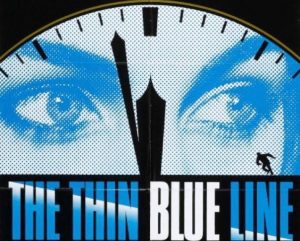
Erol Morris’s Thin Blue Line (1988) is a well crafted documentary and is one story in this history of injustice that often leads to exoneration with no compensation after being put to death. It’s incredible how Morris was able to influence the outcome of Randall Adams’ death sentence. I appreciated the usage of the reenactments over and over again, assimilating one piece of the evidence into the documentary and also allowing the audience to play a role in this investigation. This brings in the themes and importance of memory and truth throughout this case. I initially thought it was odd to not show us the reenactment of the real killer behind the wheel, but then realized that this played a role in the mystery of the documentary. Morris structured it as a whodunit, a story or play about a murder in which the identity of the murderer is not revealed until the end. But, the interviews were a form of giveaway, since David Harris was in the orange prison jumpsuit while Adams was in a white shirt. The narrative spine is the evidence that helps move the Thin Blue Line forward.
This once again brings up the question of ethics. Was it right for Morris to use Adams’ miserable story to create a piece of art? In one of Morris’s interviews, he says that if the internet was as prevalent as it is today, more people would be more aware of Adams’ story back in the day. The fact that it wasn’t helped him investigate and create this documentary. Morris also talks about how Adams was never part of the equation; he went into this documentary with intentions of filming a psychiatrist about his role in the implementation of death penalty in Texas. Through this psychiatrist, he heard about this case and decided to start investigating. This goes back to the point Bernard and all of our documentary books collectively say, “the story revealing itself over the course of the production or even in the editing room.” (Bernard).

Nice inclusion of a graphic Shreya. Love the phrase “narrative spine.”